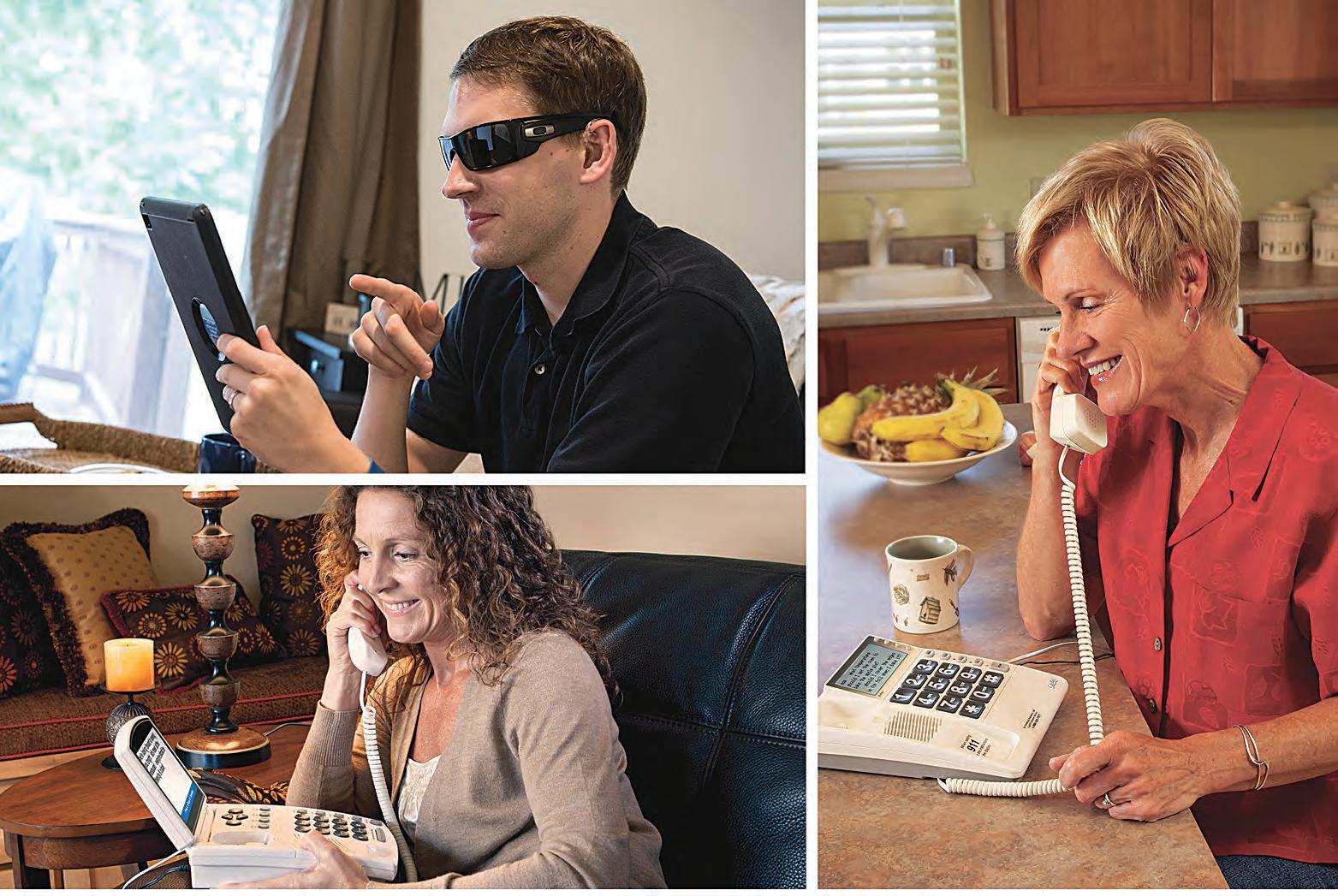
3 minute read
Maryland Relay : Making New Connections
Maryland Relay: A Good Connection
Maryland Relay provides telecommunications access
Whether you are talking about phone lines, internet service or relationships, good connections, are, well, good. They are also important. Connections—whether to friends, loved ones, neighbors, co-workers, or service providers—are a vital component of a happy and healthy life. This is no less true for individuals who are Deaf, hard of hearing, late-deafened, DeafBlind, or who have cognitive, mobility or speech challenges. Maryland Relay is committed to helping these individuals remain connected by providing solutions to meet diverse needs. Maryland Relay is a free public service, administered by Telecommunications Access of Maryland. When a Maryland Relay user makes a call, they can use a variety of methods. A specially trained Operator facilitates conversations between the Relay user and the other person. Maryland Relay Operators maintain strict confidentiality as mandated by federal rules, meaning all conversations are private and protected. Relay services are available 24 hours a day, 365 days per year. There is no limit on the number or length of calls a user may make, and there are no set-up fees or charges for calls. To make a call using Maryland Relay, users simply pick up the phone and dial 7-1-1. There are many different types of services available through Maryland Relay to accommodate the diverse needs and abilities of people across the state.
Service Options
People who are Deaf, hard of hearing, or have difficulty speaking can access a variety of solutions through Maryland Relay. Some options allow callers to use a keyboard to type conversations, while others use an Operator to translate voices and display text on a specially equipped phone. Callers who are hearing can use a standard home or cell phone to connect with Maryland Relay users. The most traditional service available through Maryland Relay is for callers using a Text Telephone (TTY). A TTY has a keyboard, which allows the user to type their side of the conversation, and a text screen to read the other person’s responses. After the TTY user types their side of the conversation, a Maryland Relay Operator reads the text to the other person. As the other person speaks in response, the Operator types the spoken words, so the TTY user can read them on their device screen. Using Hearing Carry-Over (HCO), Maryland Relay users who can hear but have difficulty speaking or being understood over the telephone are able to type their side of the conversation, which is then voiced to the other participant by the Operator. Speech-to-Speech (STS) is a similar service that assists individuals who have mild to moderate difficulty speaking and can hear clearly on the phone. Users speak with their own voice or with an assistive device and the Operator re-voices what is said, as needed. This service may be particularly helpful for people living with cerebral palsy, multiple sclerosis, Parkinson’s disease, and other conditions. Visually Assisted STS is also available, allowing Maryland Relay Operators to use speech and visual cues to facilitate conversations. Using Voice Carry-Over (VCO), people who can speak clearly but have difficulty hearing what is being said over the phone can remain connected. The Relay user speaks directly to the other person. As the other person responds, an Operator types the response and the VCO user reads it on the screen of their phone. Another option for individuals who have difficulty hearing over the phone is a Captioned Telephone. A Captioned Telephone works just like a standard phone, with one important difference: it displays captions on the device’s screen of what the other person says throughout the conversation. For clarity, the Captioned Telephone user can read the captions while listening to the other person’s spoken words. For Spanish speakers, Spanish Relay is available for all the aforementioned services. These services include both Spanish-to-Spanish and Spanish-to-English communication ...
Read the full article by downloading the Maryland Spring/Summer 2021 ISSUU






